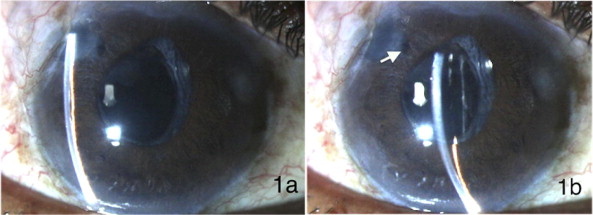Malignant glaucoma, also known as aqueous misdirection syndrome, is a rare but serious form of secondary glaucoma. It is characterized by the misdirection of aqueous humor into the vitreous cavity, leading to increased intraocular pressure (IOP) and potential vision loss. Prompt diagnosis and management are crucial to prevent irreversible damage.

Causes and Risk Factors
Malignant glaucoma is often associated with a history of ocular surgery, particularly procedures such as trabeculectomy, cataract surgery, or laser treatments. The primary cause is the anterior displacement of the lens-iris diaphragm, which obstructs the normal outflow of aqueous humor.
Risk Factors:
- Previous eye surgery (trabeculectomy, cataract extraction)
- Hyperopia (farsightedness)
- Angle-closure glaucoma
- Use of miotic agents (such as pilocarpine)
- Inflammatory eye conditions
Symptoms of Malignant Glaucoma
Symptoms can develop suddenly or gradually and include:
- Severe eye pain and redness
- Blurred vision or sudden vision loss
- Increased intraocular pressure (IOP)
- Corneal edema
- A shallow anterior chamber (hallmark sign)
Diagnosis
A comprehensive eye examination is necessary for diagnosing malignant glaucoma. Key diagnostic procedures include:
- Slit-lamp examination: Evaluates anterior chamber depth and angle status.
- Gonioscopy: Determines whether angle closure has occurred.
- Ocular ultrasound (B-scan): Helps assess posterior segment involvement.
- Tonometry: Measures intraocular pressure levels.
Treatment Options
Management of malignant glaucoma aims to lower intraocular pressure, restore aqueous humor flow, and prevent recurrence.
1. Medical Management
- Cycloplegics (Atropine 1%): Induces ciliary body relaxation to restore fluid flow.
- Aqueous Suppressants (Beta-blockers, Carbonic Anhydrase Inhibitors): Reduce intraocular fluid production.
- Hyperosmotic Agents (Mannitol, Glycerin): Decrease vitreous volume and lower IOP.
2. Laser Therapy
- Nd**:YAG**** Laser Iridotomy:** Creates an opening in the iris to facilitate aqueous flow.
- Cyclophotocoagulation: Reduces aqueous production by targeting the ciliary body.
3. Surgical Intervention
- Pars Plana Vitrectomy (PPV): Removes misdirected vitreous fluid to restore normal pressure dynamics.
- Anterior Hyaloidectomy: Creates a pathway for aqueous humor to exit the vitreous cavity.
- Sclerectomy and Zonulohyaloidotomy: Used in refractory cases where conventional treatments fail.
Prognosis and Prevention
With early intervention, the prognosis for malignant glaucoma improves significantly. However, delayed treatment may lead to permanent vision impairment. Preventive strategies include:
- Careful post-surgical monitoring
- Avoiding excessive use of miotic agents
- Regular eye examinations for at-risk individuals
Malignant glaucoma is a rare but potentially blinding condition requiring immediate medical attention. Awareness of risk factors, timely diagnosis, and appropriate treatment are essential for preserving vision and improving patient outcomes.

